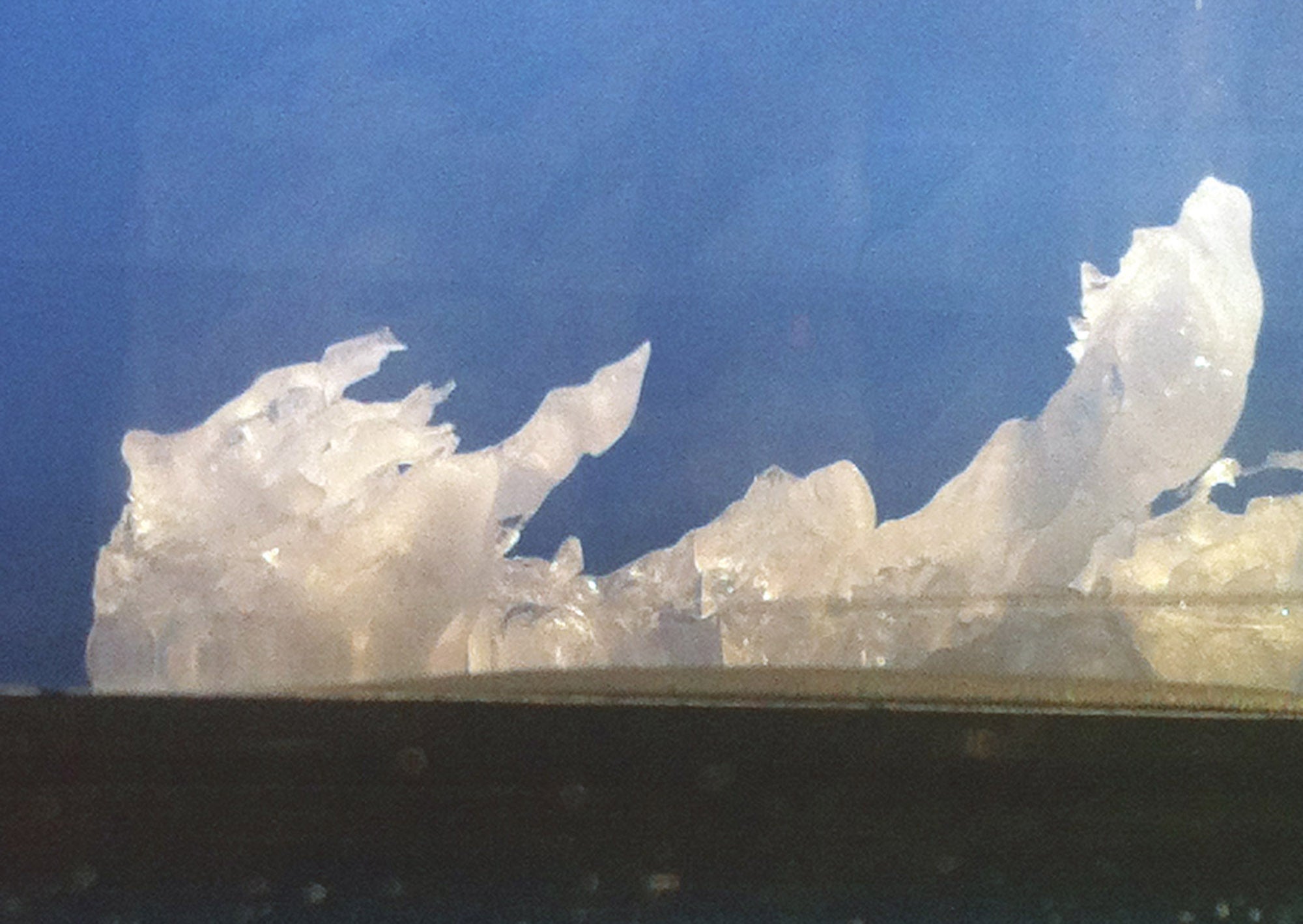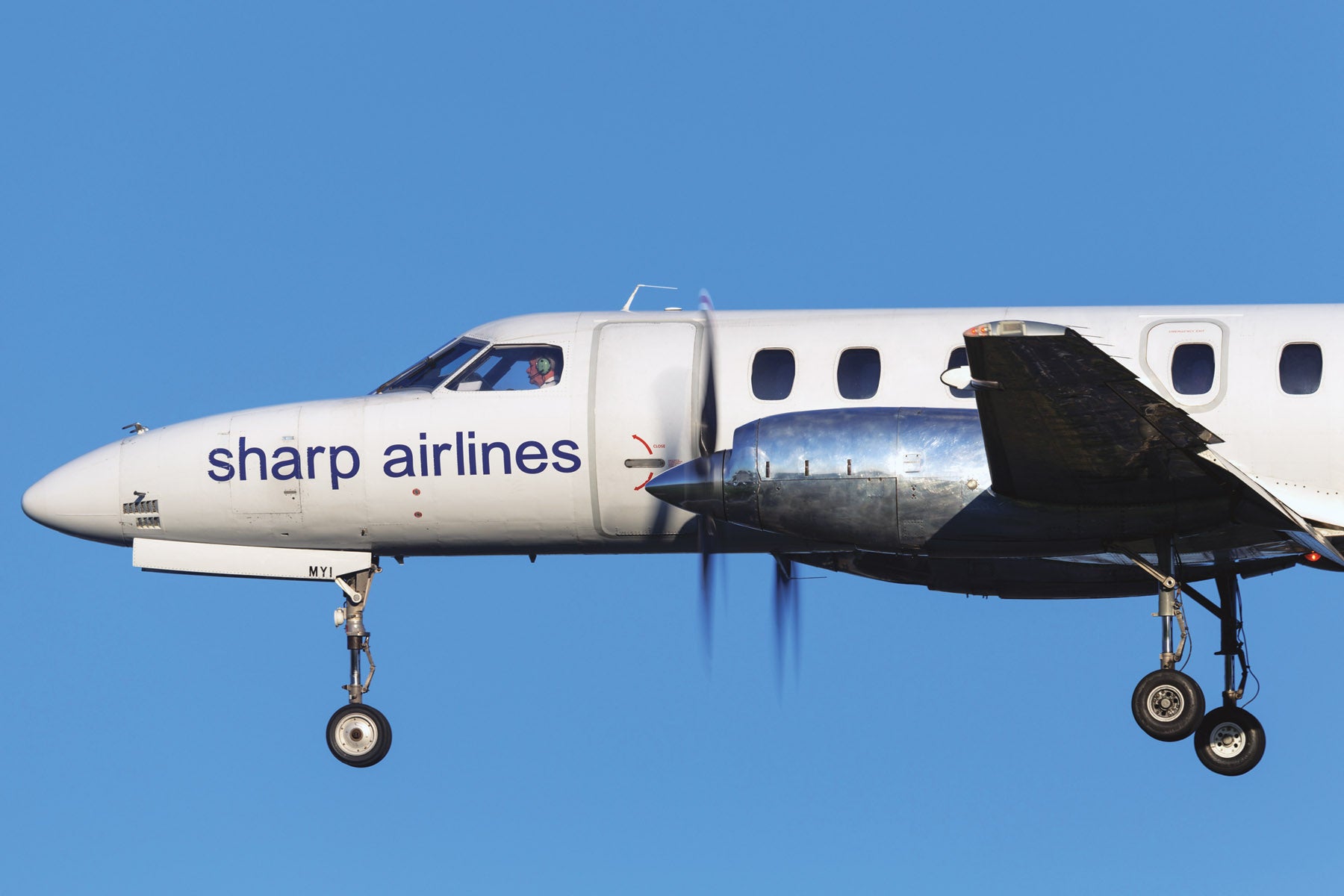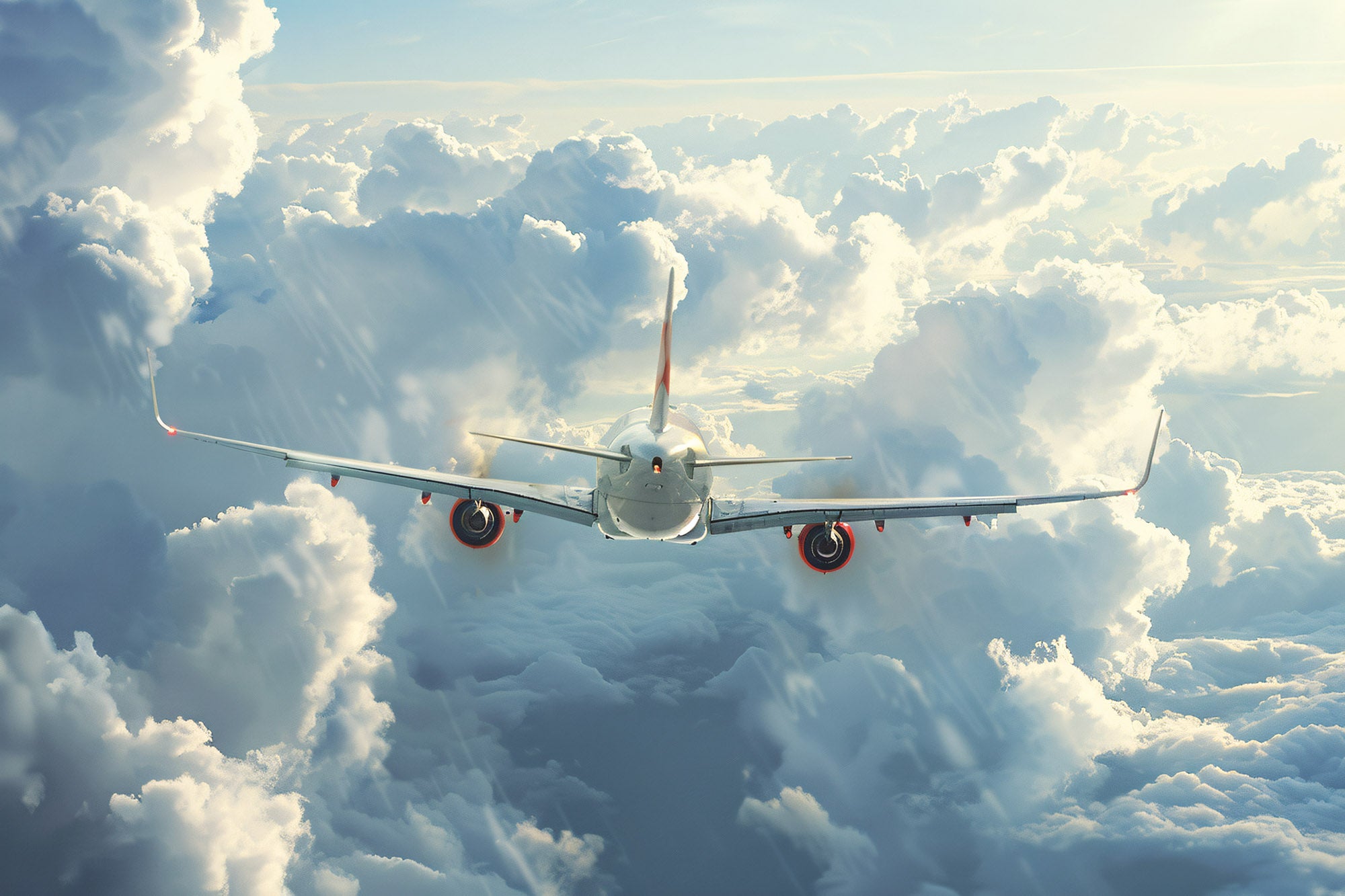
Every pilot who has ever experienced icing conditions will remember their first time. Something particularly alarming comes when experiencing icing conditions in a conventional multi-engine propeller aircraft. When the prop deice is activated, it sounds and feels like someone is driving golf balls into the side of your aircraft. It is quite disturbing—even when expected.
I don’t want to get too deep into the weeds of the chemistry and physics of icing conditions, as they are complex. What I would like to do is share a couple of examples of real-world experience.
Jackson Hole
My first airliner job was flying the Fairchild Metroliner around the more mountainous areas of the Western U.S. I will never forget one winter morning in 1987 flying into Jackson Hole Airport (KJAC) in Wyoming as a fairly new Metro first officer. My captain was one of the more experienced on our staff. At the time, the airport was non-towered and had no low-level radar coverage. Due to weather, we would be shooting the entire ILS approach, including approaching from the south, tracking outbound on the localizer, executing a procedure turn back to the localizer and flying the ILS approach inbound. When Salt Lake Center cleared us for the approach, they advised us that a previous arrival had reported a “trace” of mixed icing on the arrival about 20 minutes prior. While it was clear and sunny on top, we entered solid IMC at about 16,000 feet and flew in the muck for about 15 minutes until breaking out on the approach a couple of hundred feet above minimums.

After landing, I did an extensive walkaround looking for ice but didn’t see anything. We had a usual little skiff of white rime at the top corners of the windscreen during the approach, but that had sublimated prior to taxiing in. There was nothing evident on the props, hubs, radome or any other of the usual places.
We quickly loaded up 15 or so passengers and after a quick turn were preparing to head back to Salt Lake City. As I recall, the departure procedure in those days was to depart to a certain altitude and then turn back to the VOR on the field and enter a holding pattern at the VOR while climbing to either the MEA (14,000 feet) for the direction of flight or radar contact with ATC.
We departed on our IFR clearance and began flying the departure procedure. Even though it was only 20 minutes or so since our approach, the conditions felt completely different. We had no sooner raised the gear and the flaps when the windshield started to ice over. Shortly thereafter, we started hearing the unnerving slaps of shedded ice against the side of the fuselage as the propeller deice systems went to work. In the Metro, the propeller arcs feel like they are right next to the shoulders of the pilots. Because, well, they almost are.
As we were entering the holding pattern for the climb above high terrain surrounding us, we found ourselves at max continuous thrust with all deice and anti-ice systems on or in automatic. Even so, the windshield was opaque and the side windows partially obscured. We were holding just above our best rate of climb speed, making less than 100 fpm. While the captain finessed the airplane, I was somewhat relieved to see that we had climbed above 10,000 feet, which felt better even though we were still thousands of feet lower than where we needed to be.
I tried to raise ATC but either because of our low altitude or antenna ice or both, it was just static. I then glanced back at the instrument panel and noticed that we had dipped back below 10,000 feet. I pointed it out to the captain as he began another turn in the holding pattern. “Yeah, I know,” was his response. We briefly discussed transitioning from the holding pattern back onto the ILS approach to return to the airport, but he didn’t like that idea. He felt that the conditions were so bizarre that they had to be fairly localized and that the region appeared to be directly over the airport.
Through deft touch, body English and swear words, the captain managed to get the airplane climbing ever so slowly again and we were back above 10,000 feet. As he began another outbound turn in the holding pattern, he said that we needed to escape the area. He told me to take out a VFR chart and plotter and plot a course away from the VOR that would keep us above the terrain. With some consternation, I did just that. As he turned back toward the VOR, I gave him the course, which as I recall was slightly to the southwest.
Turning away from the established departure procedure felt both wrong and right at the same time. As we turned outbound, we were slowly approaching 11,000 feet. Once we got about 15 miles outbound from the VOR, we noticed that the thumping of the ice from the props had dropped dramatically in frequency. We noticed that the ambient light from the still-obscured windows had brightened and our airspeed and vertical speed were increasing. As we started approaching the MSA for the area, we turned to intercept our filed course. At about that time, we established contact with ATC; they now had us in radar contact and our glutes began to relax.

Big Iron
The next example was a short flight from Oakland, California, to Reno, Nevada. We were in a Boeing 737-800 and had all the advantages of a modern airliner. We had amazing thrust, effective deice/anti-ice and full EFIS with moving maps with terrain and weather display.
It was a beautiful spring day and the weather was VFR at KRNO. However, our descent on the arrival would take us through a forest of towering cumulus building along the western face of the mountain range as we proceeded northeast for a southern arrival.
The clouds were actually beautiful but appeared to portend turbulence so we sat the flight attendants down early. Nothing worse than green was painting on the radar. Descending through the clouds was actually kind of fun because we would punch in for 10 or 15 seconds and then punch back out into the clear just a few seconds before punching back into another. Those conditions really give the pilots a sense of velocity, especially when you see your own shadow on the cloud face you’re about to penetrate.
As we leveled off at our assigned altitude, we were constantly in and out of the clouds. On each entry we would get a slight dusting of rime ice at the inner top of our windscreens and the wiper nut, but it would sublimate as quickly as it appeared. As we were running the arrival checklist, we popped out into the clear, but front and center broadside to another towering cloud—only this one appeared much darker. What had been green on the radar moments ago was now yellow and it was too late to deviate. The effects of penetrating this one were as sudden as they were dramatic. We could actually hear the ice accreting. The windshields went instantly opaque and the Boeing immediately lost about 30 KIAS.
We watched with amazement as the airplane pitched up to maintain altitude and the autothrottles advanced the thrust levers to maintain airspeed. We noticed on the side windows these weird finger-like appendages of ice an inch or two long that grew out from the window and into the airstream. Our time passing through this beast was about twice as long as the previous ones, but when we finally emerged back into the clear it was shocking to see how much ice stuck to the airframe that we could see, especially big dams of finger-like ice on the wings just aft of the heated area of the leading edge. It was almost like the speedbrakes were deployed. We got cleared to a lower altitude and as suddenly as the ice had plastered us, it started to slough off and we landed without incident. Neither of us had seen anything like it before or since.
Experienced pilots know that all things considered, airframe icing is rare and most encounters are not dangerous at all, being merely a trace that has little to no material impact to aircraft performance. This fact can be reassuring but can also promote complacency.
The real danger, however, is that water can do some crazy things when it comes to a very narrow band of atmospheric conditions that superchills but doesn’t freeze it. In that state, it’s kind of like a shell around an egg waiting on a disruption to crack the shell and release the AquaKraken. There are several factors at play and in the atmosphere the danger zone can lurk horizontally, like in the Jackson Hole example, or vertically (convectively) like the Reno example. What makes it so insidious is that the same conditions that make it so rare also make it almost impossible to forecast or detect in advance. The difference between trace and severe can be just a degree or two in either direction.
Our World
Other than the fact that I firmly believe that every ship this side of an ultralight should have and use pitot heat, I think that it is folly to add anti-ice/deice capability to a standard E/A-B aircraft. To me, it just gives a false sense of security. It is very likely never to be used in anger, unless someone is reckless enough to go chasing after prime conditions just to play with their fancy systems. Furthermore, if they do encounter the really crazy stuff, it’s very likely to not be enough to ensure success. The real key is to just avoid icing conditions diligently and if they are accidentally encountered, take deliberate and significant steps to escape, which usually means changing altitude. Worse, depending upon terrain or performance, it may not even be an option. The best anti-ice system is avoidance.












